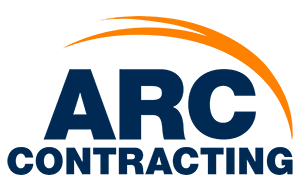Flat Roof Materials: Rubber Membranes, Metal Roofing and More
In this blog, we’ll go over the most common and popular commercial flat roofing materials. For Wisconsin, we see one of the following materials covering every commercial roof: PVC, TPO, EPDM and metal. Which material is protecting your business? Let’s go over the differences between the four materials and how to know which is best for your roof.
PVC Membrane
Polyvinyl chloride (PVC) is a single-ply roofing membrane, often white in color. PVC is a popular choice for surface material on flat roofs because it is waterproof. When snow falls onto the roof, as it often does in northern Wisconsin, the flatness of the roof invites water pooling once the snow melts. By using a waterproof material, business owners can sleep soundly knowing that the water can’t seep through the membrane itself. To get the best use out of your PVC roof, make sure the membrane seams are well sealed. That is a point of weakness.
PVC is also a great choice for the return on investment that you will get with your roof. It has an average lifespan of 25 years, with proper installation and regular bi-yearly maintenance.
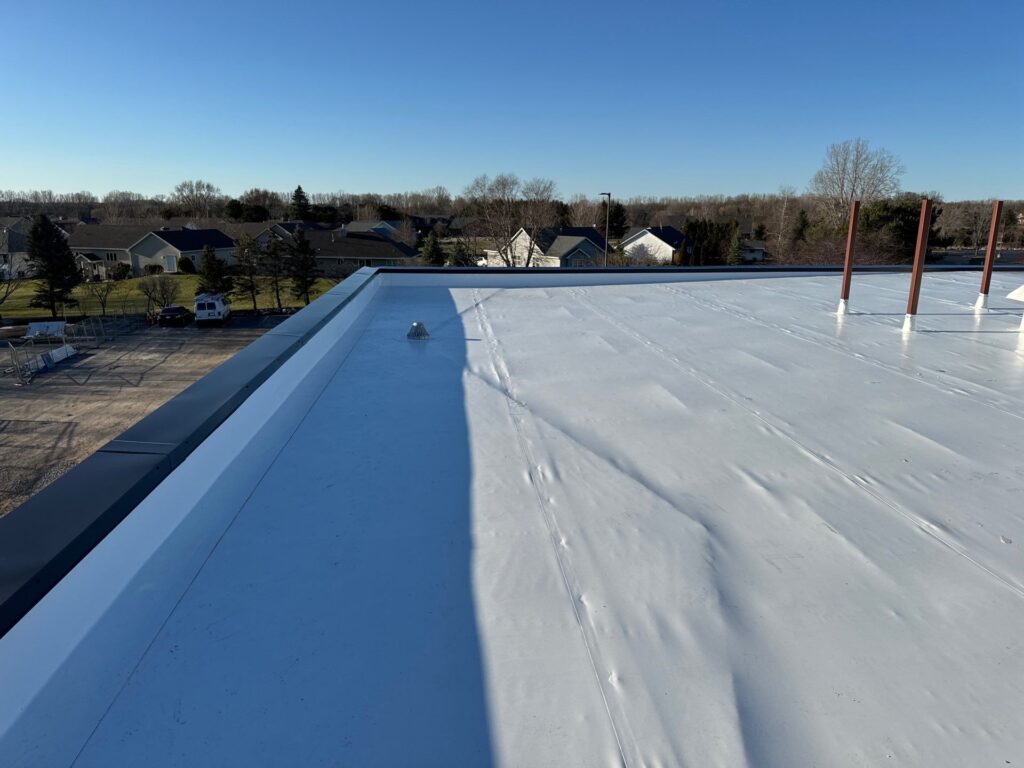
TPO Membrane
Much like PVC, thermoplastic polyolefin (TPO) is a single-ply white membrane. It is also very waterproof and therefore a great option for snowy and rainy climates. If your roof experiences heavy snowfalls, TPO might be a better material for your business. It is less flexible than PVC which allows less stretching and tearing upon installation, and less tearing when engaging in roof snow removal in the winter. In the summer, the white color is a perfect reflector of the sun, keeping your roof and the space below it nice and cool.
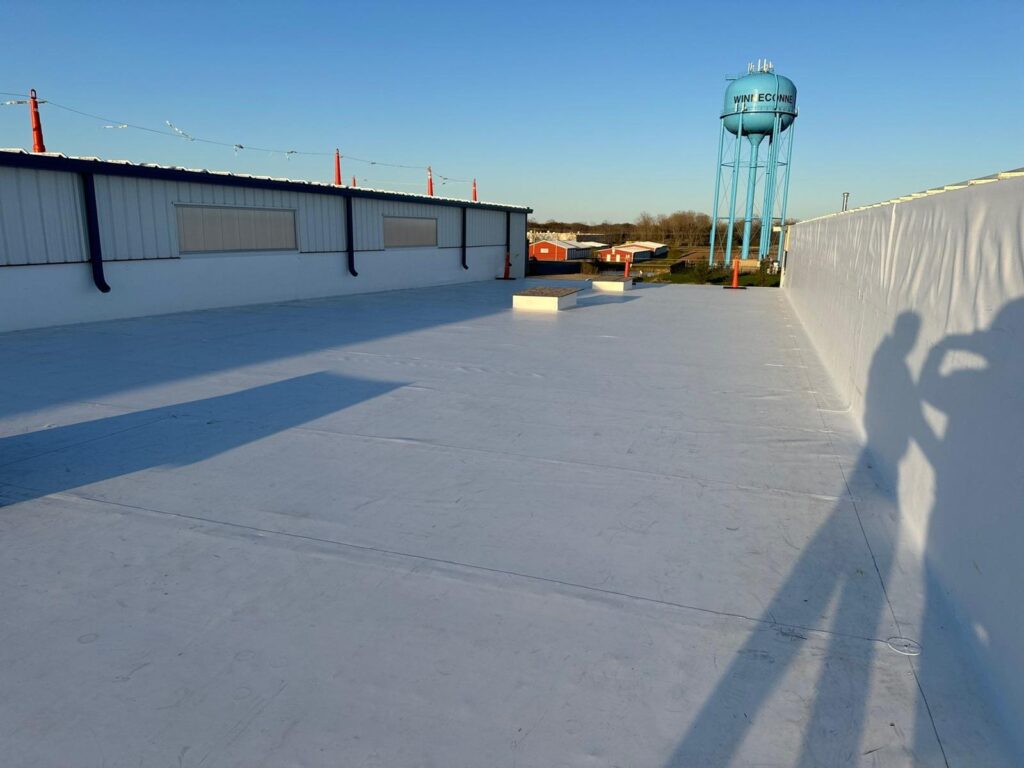
EPDM Membrane
Ethylene Propylene Diene Terpolymer. No wonder we call it EPDM…
EPDM is most commonly used for larger commercial buildings. It is a synthetic black rubber membrane. The rubber and the black color attract sunlight and heat up the roof, making it an inconvenient roofing choice if there are bedrooms or living spaces below the roof. The black color is favorable for heating and aesthetics. The darker color erases any dirt and dust from view.
Besides aesthetics, EPDM membrane is a great choice for anyone wanting to avoid roofing issues. It is a very durable rubber material and can often last up to 30 years with proper installation and maintenance.
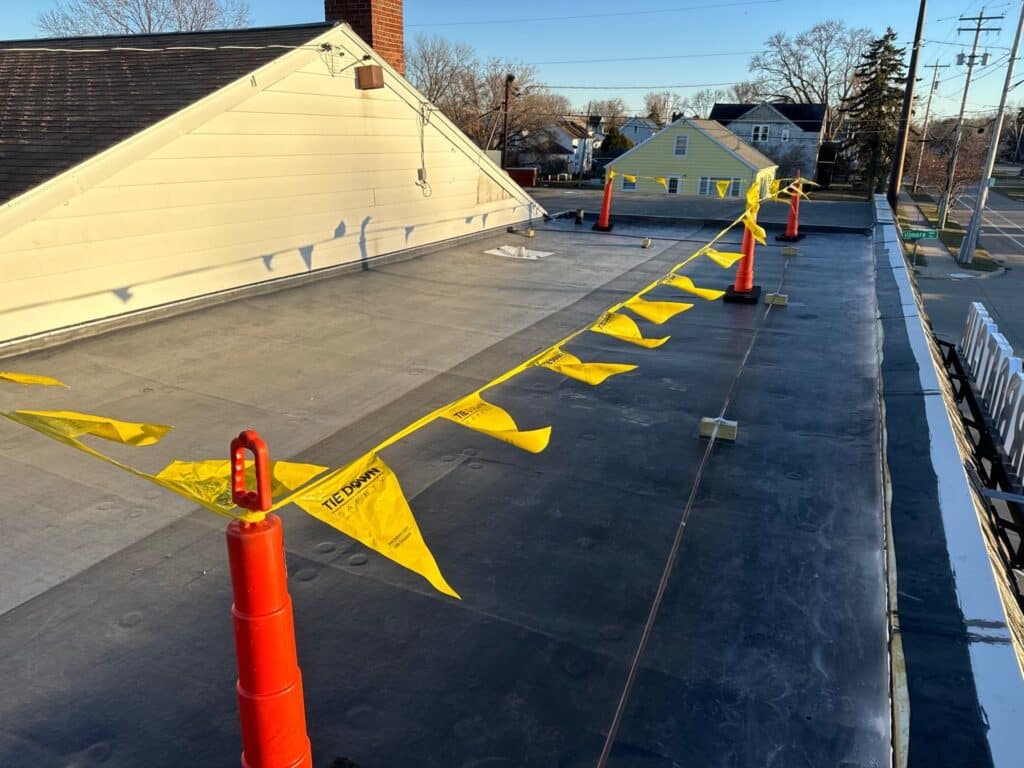
Metal Roofing
Metal roofing is often the most expensive material option, but it offers more protection than standard membrane rubber roofs. Available in aluminum, copper, corrugated steel, standing seam and stone-coated steel, metal roofing comes with many benefits:
- Highest hail resistance
- Longest lifespan
- Most fire resistant
Metal roofing is also very energy efficient, reflecting the sun’s heat and keeping interior spaces cooler. Taking the climate and elements into account, most metal roofs have an average lifespan for 40+ years, with minimal upkeep.
Maintenance, though not as crucial as for other roofing materials, is still highly recommended. Metal roofs can still leak if not sealed properly, which can lead to corrosion and rust. Improper installation and maintenance can also lead to loose panels which cause noise in high winds or strong rain storms.
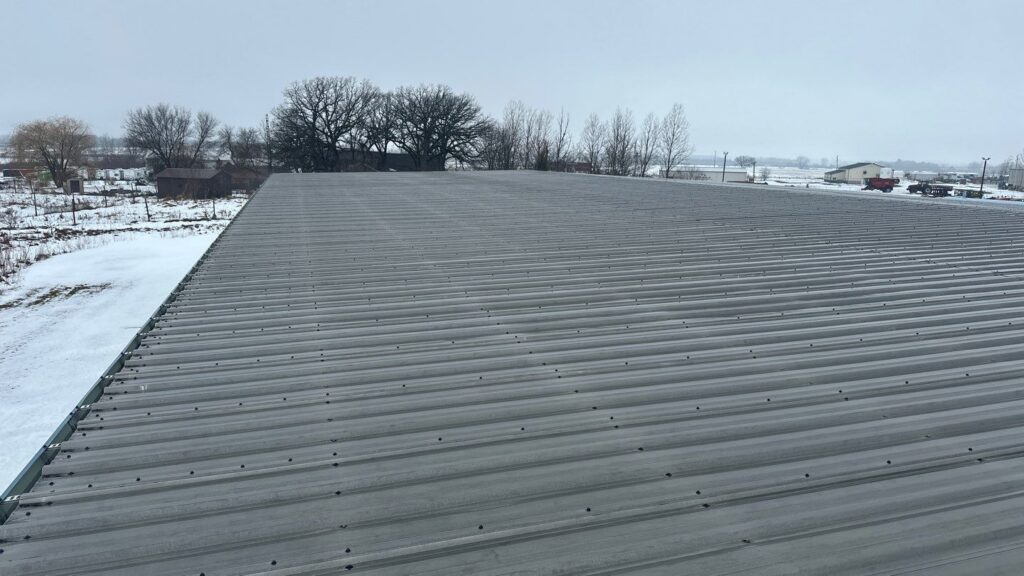
Ballasted Roofs
Ballasted roofs are a combination of membrane with stones on top. Flat roofs are covered with a water-resistant membrane (PVC, TPO or EPDM) which is fastened to the parapet walls of the roof. Any additional sealing, fastening, and use of adhesives is not needed. The membrane is weighted down by the added gravel stones. The stones also help filter the water so as to not block any drains with fallen leaves, sticks or other debris.
One of the main advantages of ballasted roofs is the cost. Thanks to saving time and materials during installation, ballasted roofs are often the most affordable roofing option. The gravel layer also protects the waterproof membrane from hail damage, foot traffic, and the sun. This reduces the risk of damage to the roof, which saves money on rarer maintenance appointments.
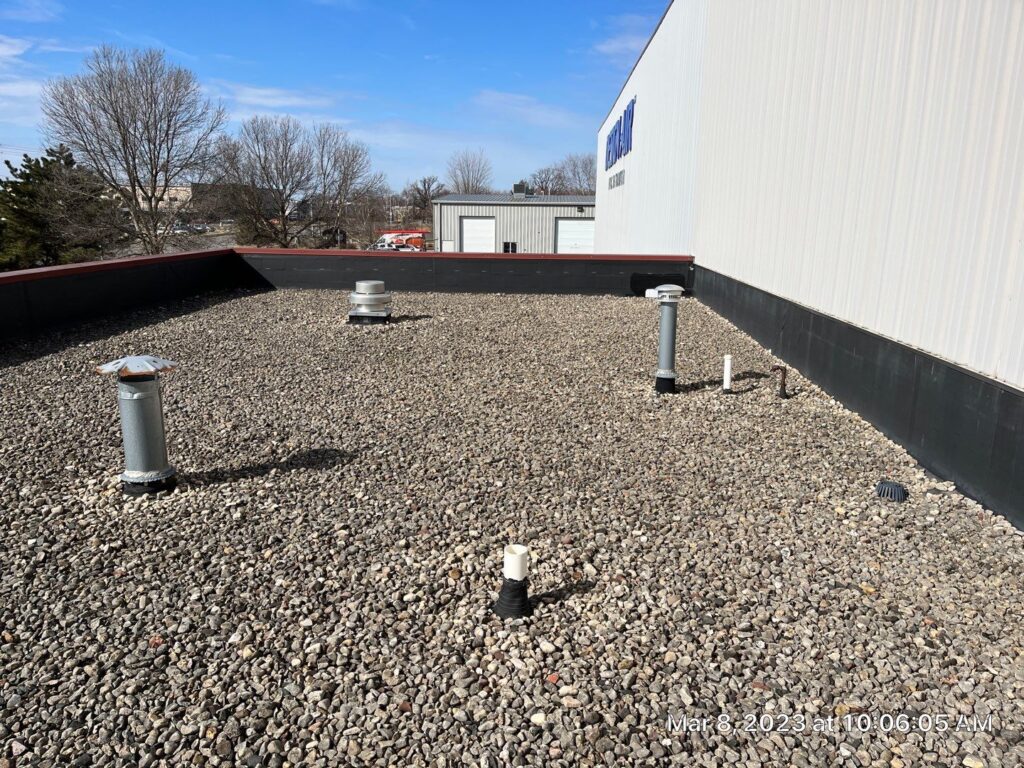
Which material is best for your roof?
Consider these factors when choosing a roofing material or when meeting with a roofing contractor. Each roof has its own needs and intricacies which is why the final decision should be entrusted to the contractor, but here’s how they make their decision.
Climate: If your roof is in an area with heavy snow or rain fall, the best material would be either TPO or EPDM. They are both waterproof and have better tear resistance. That way, with standing water from rain or melting snow, your roof is less likely to leak. These two materials are also most tear resistant, which makes them a better choice if you would need snow removal services for regular maintenance and care.
Budget: If you’re on a tight budget, return on investment should be top-of-mind. Though metal roofing is more expensive to buy and install, it’s also the longest lasting roofing material. If you’re deciding between rubber roofing systems, EPDM is a good choice for the same reason: It’s more durable and will last you longer than the others. The extra expense is worth it for the higher material quality.
That being said, not everyone can afford a full re-roof with all the bells and whistles. PVC and TPO membrane materials will still do a great job at covering your roof and protecting what’s inside. They are less expensive materials to purchase and install, and with proper maintenance and care, can last you approximately 25 years.
